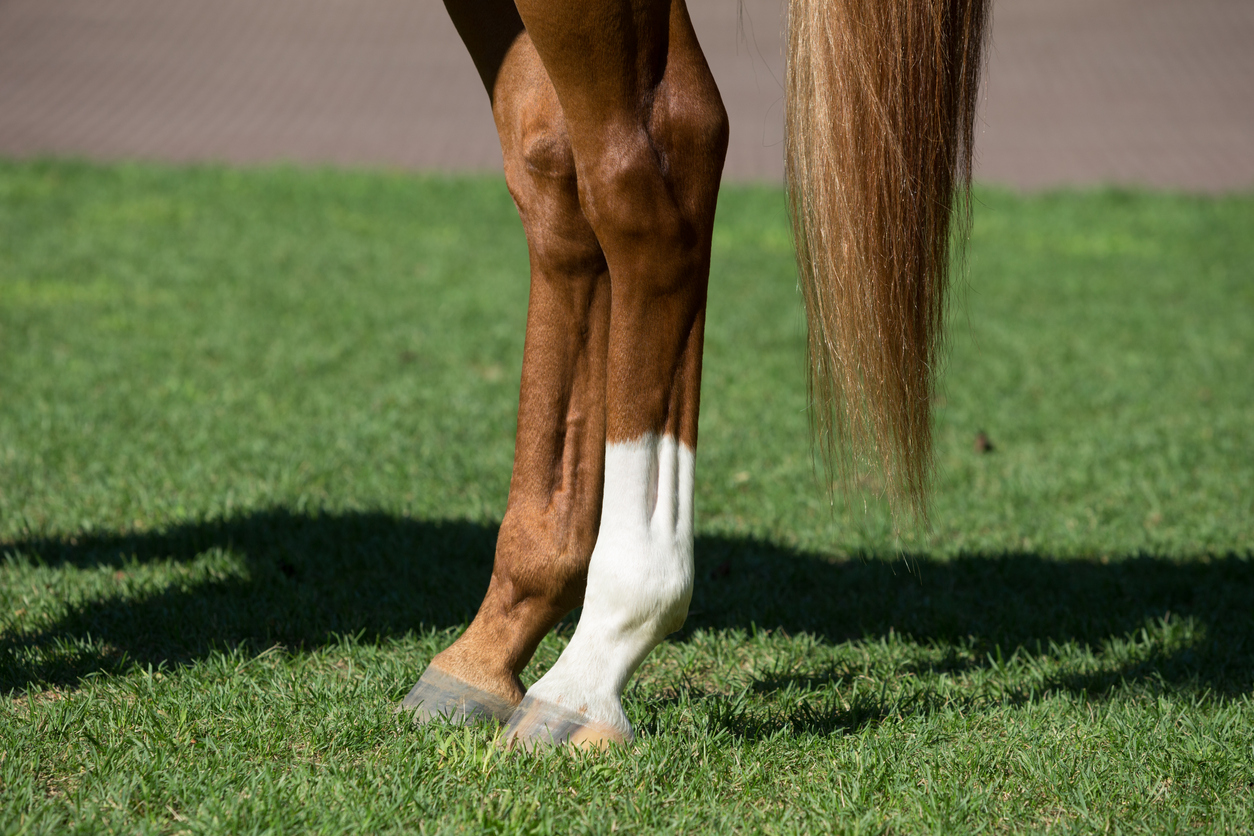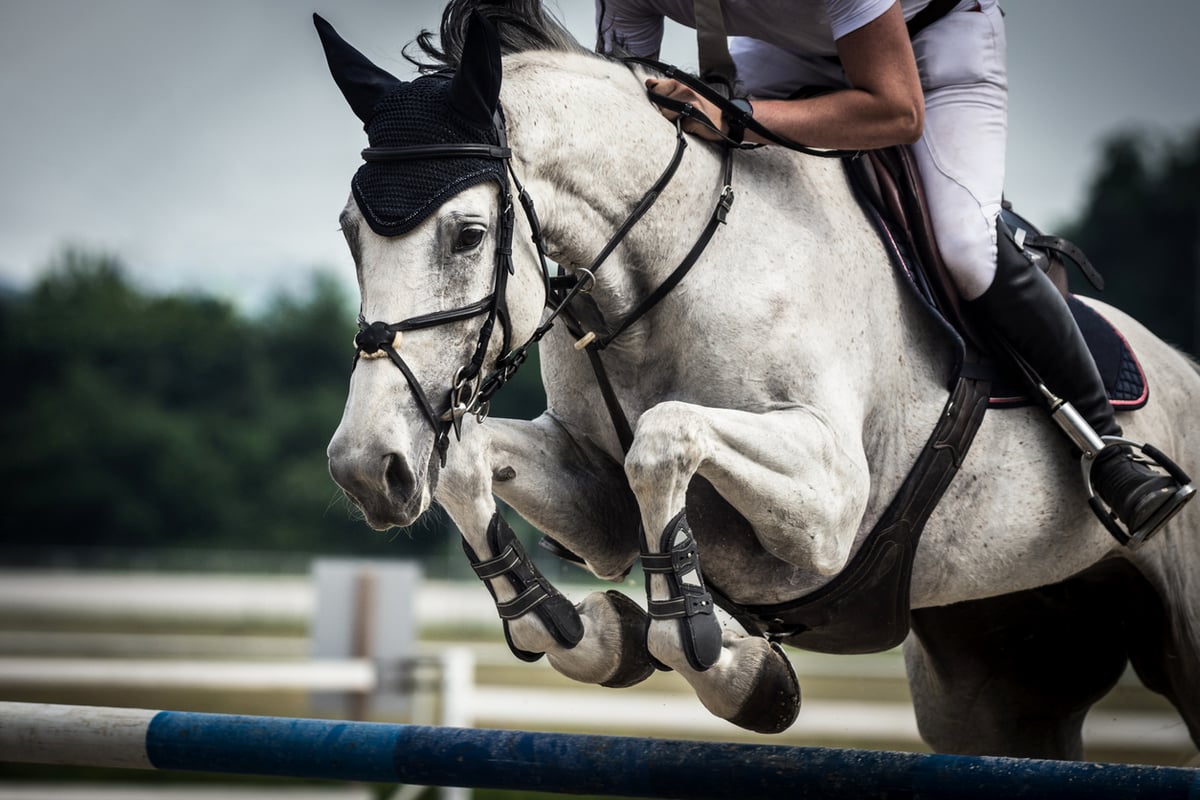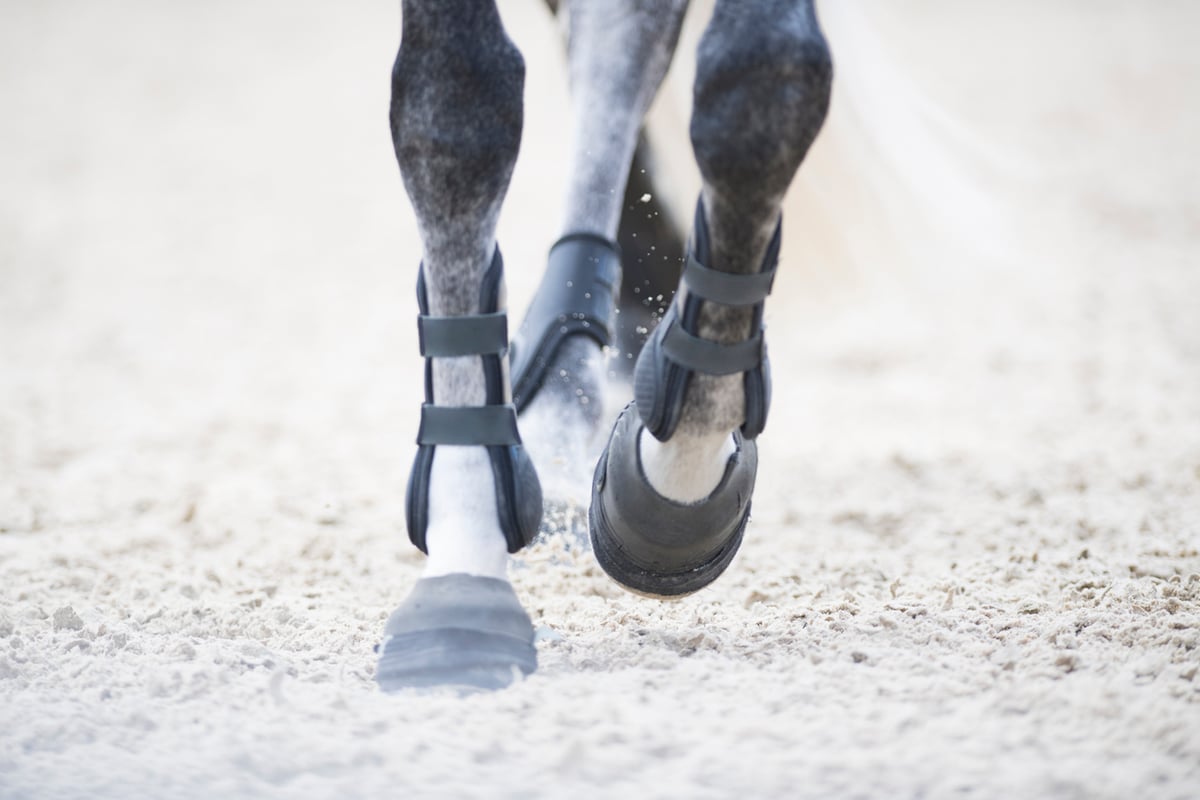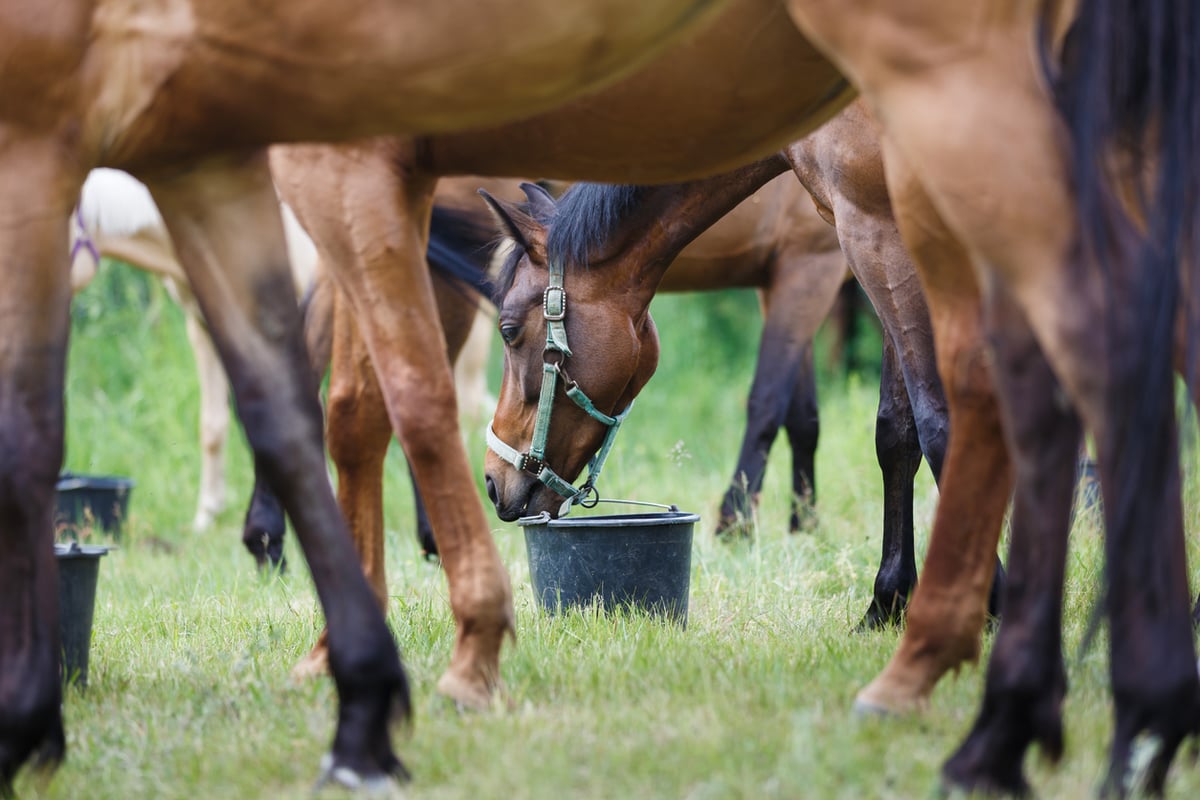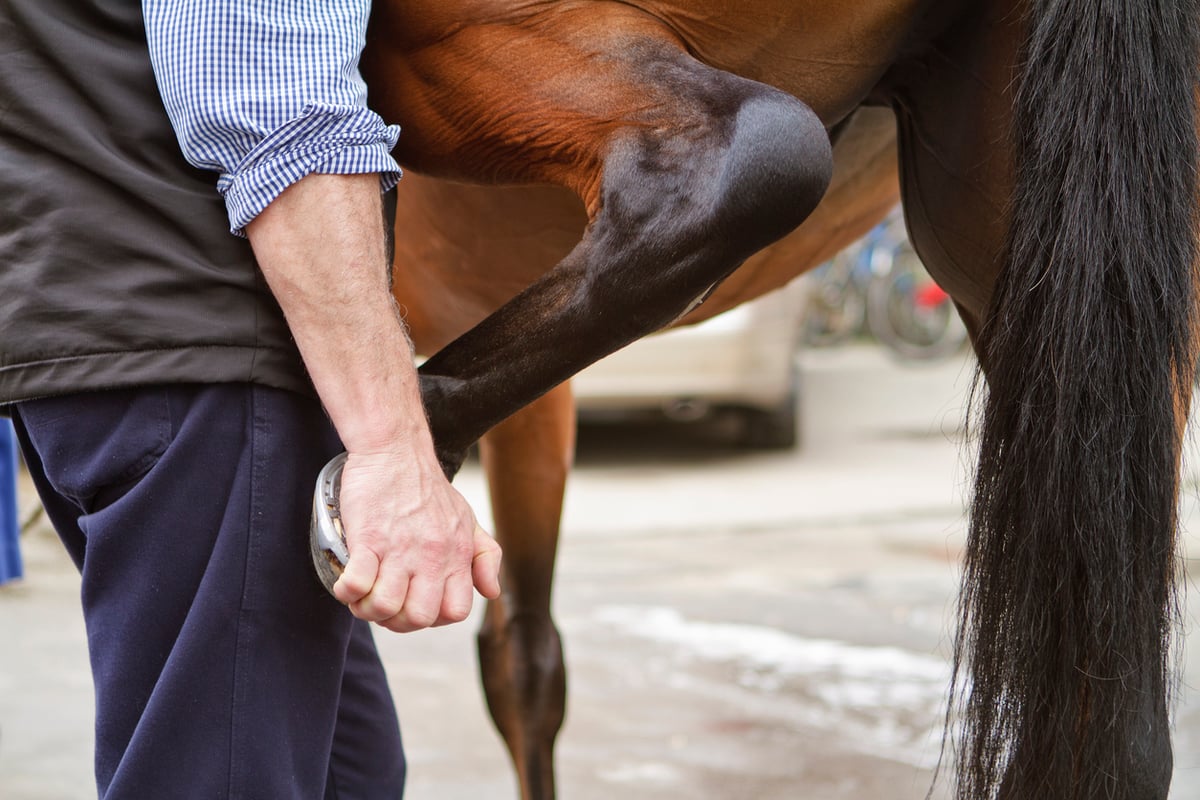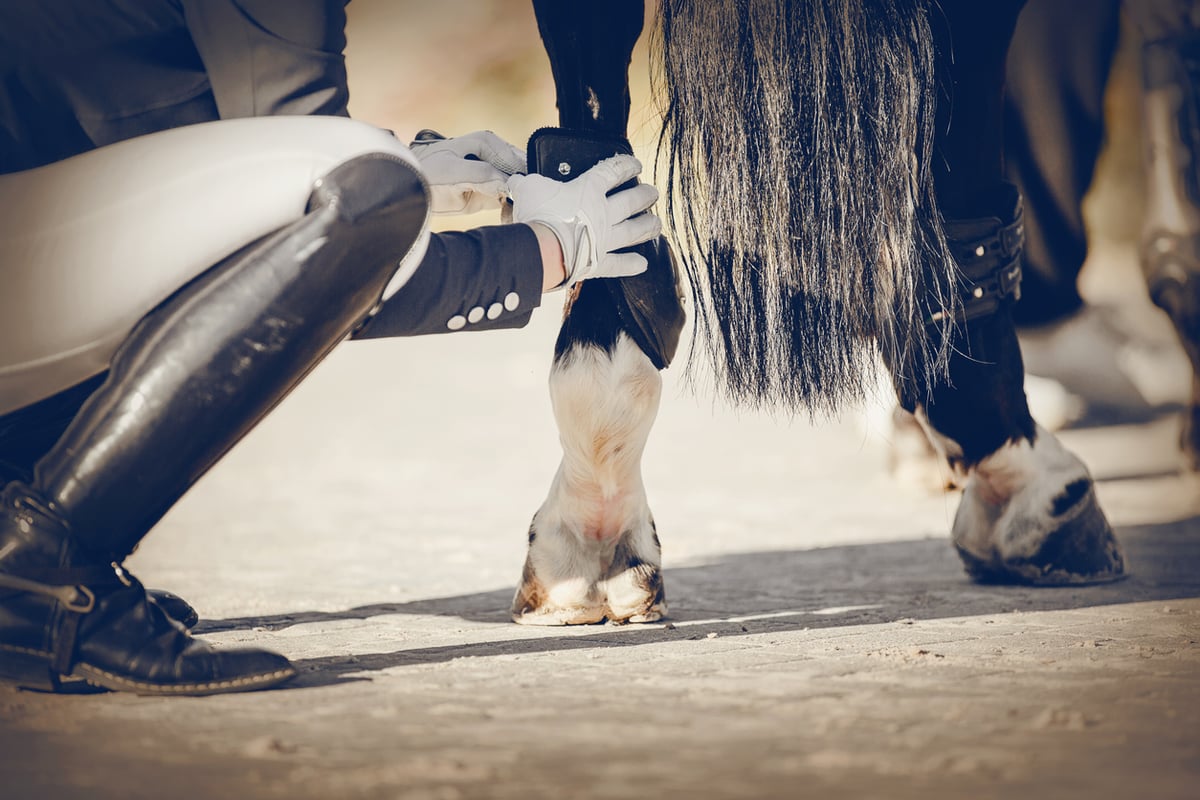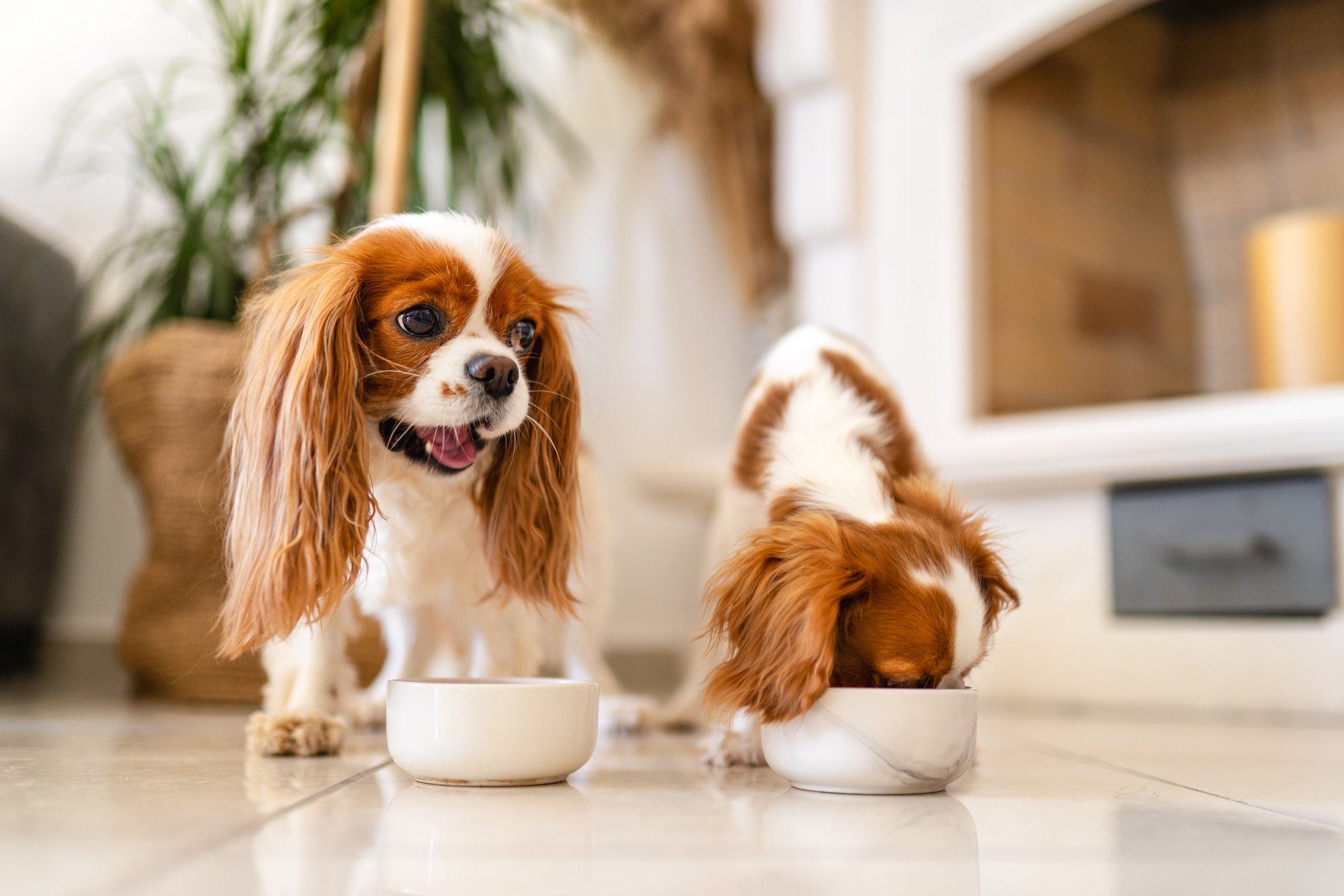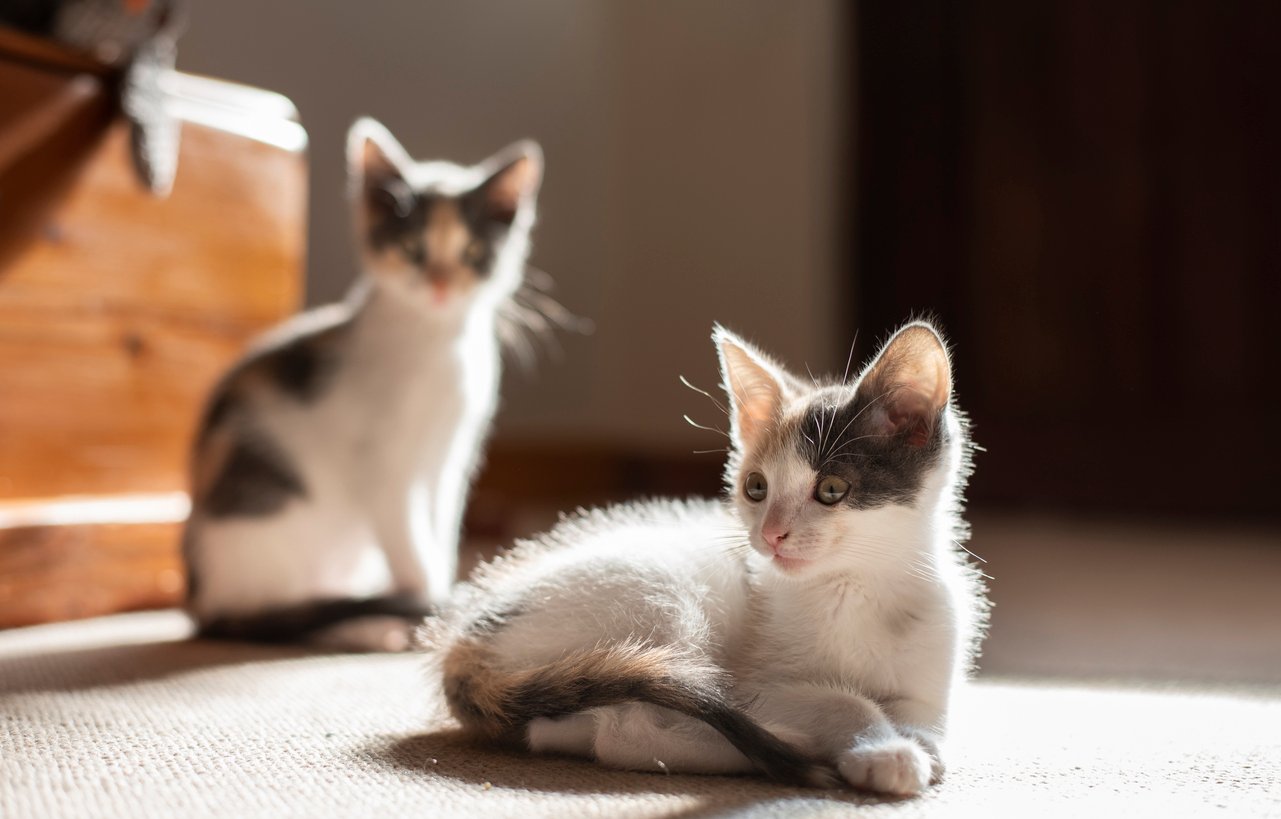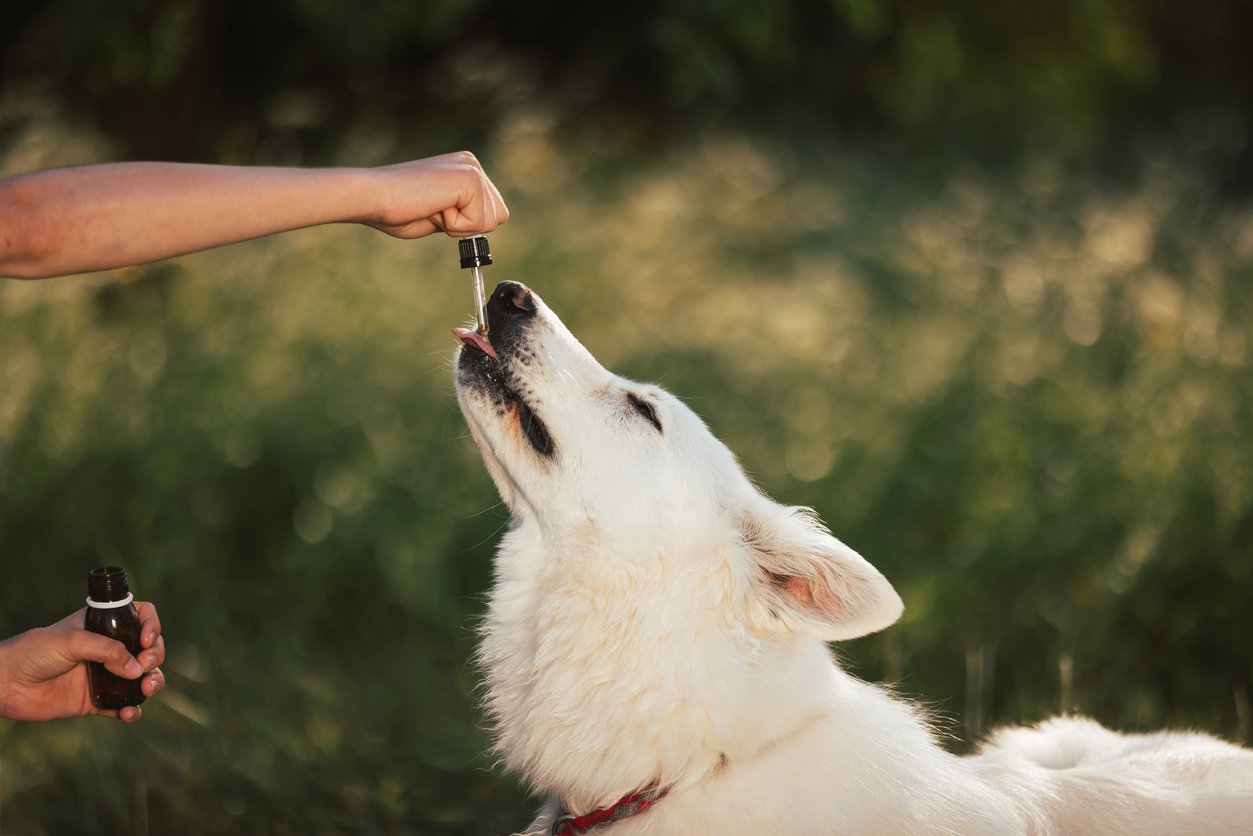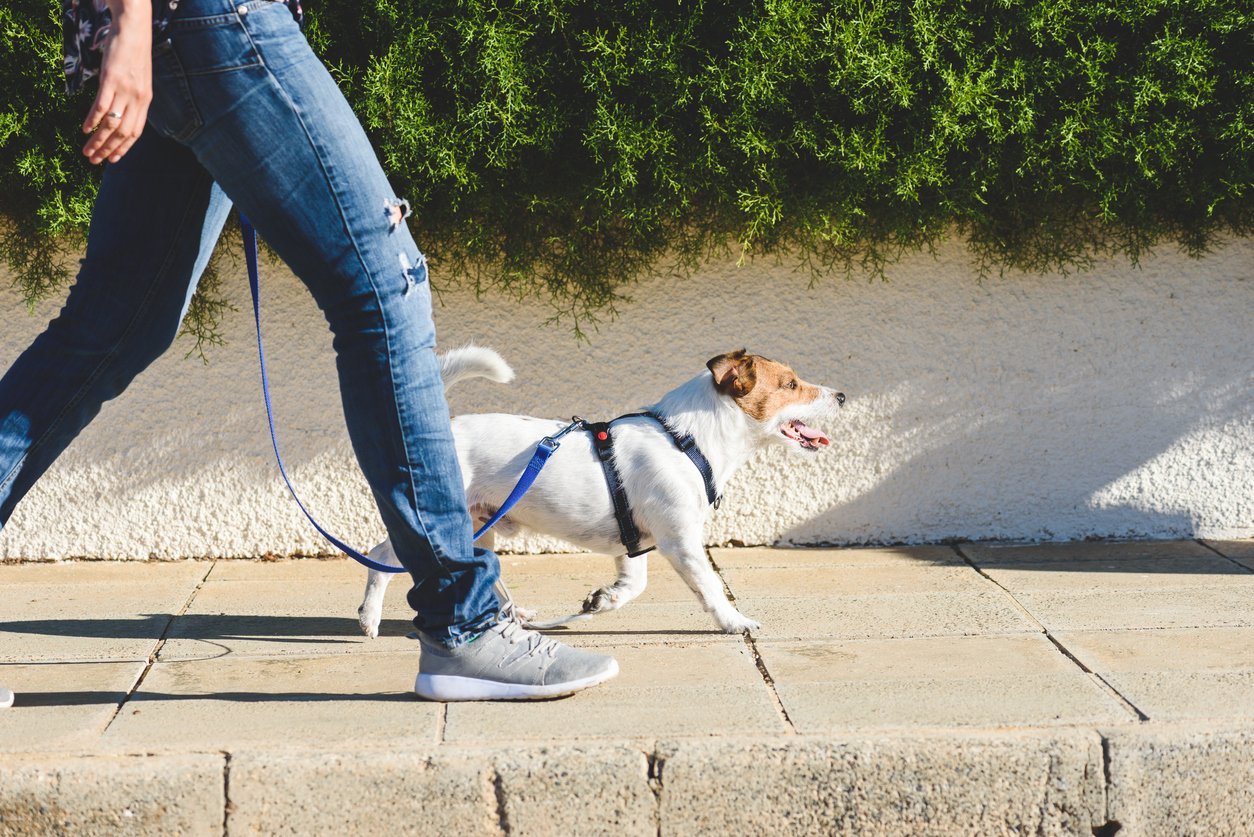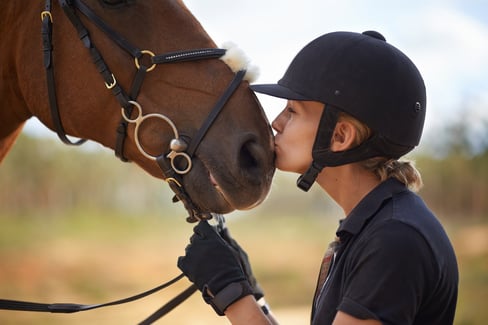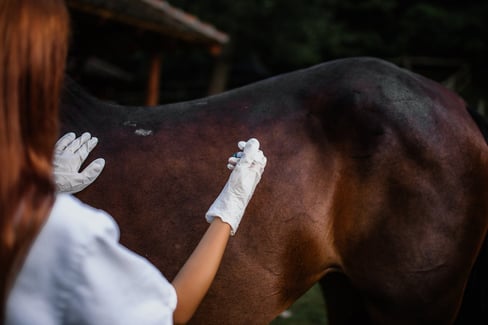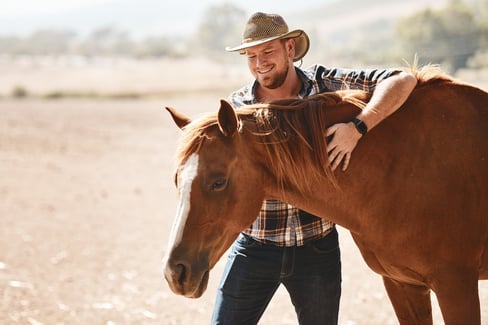Table of Contents
Taking care of your horse properly requires a ton of effort and patience.
There’s so much to consider to ensure their health is in good shape, and they’re hitting the hay every night with nothing but sweet dreams
But sometimes, there are problems with our horses that can be hard to detect, so you need to arm yourself with as much knowledge as possible to help give your horse the best chances at a long and healthy life.
One big problem you need to watch for is ringbone in horses. This type of osteoarthritis can impact your horse’s mobility, and if left untreated can leave you with a lame horse.
In this post, we’ll provide you with the information you need to know about what causes ringbone in horses, signs of ringbone in horses, and of course, how to prevent and treat ringbone in horses. So that way, you’ll have all the answers you need before you’re no longer in the tooth!
What is Ringbone in Horses?
Before we get any further, you’re probably wondering what is ringbone in horses?
Ringbone is a kind of osteoarthritis in horses. Osteoarthritis is a chronic, progressive disease where the cartilage, soft tissues, and bones deteriorate in articular joints, which causes pain when your horse moves. Ringbone is a term for osteoarthritis that specifically occurs in the pastern and (or) coffin joints in a horse’s lower limbs.
There are two kinds of ringbone that are related to the pastern and coffin joints:
- Low ringbone in horses (ringbone in the coffin joint)
- High ringbone in horses (ringbone in the pastern joint)
Each of the above joints plays a key role in your horse’s movement.
The coffin joint is a large, high-motion joint within the hoof, whereas the pastern joint is a much smaller joint that has a much smaller range of movement. The pastern joint is located between the top of the hoof and the fetlock and carries a lot more weight than the coffin bone.
The diagram below shows where these important parts are located.
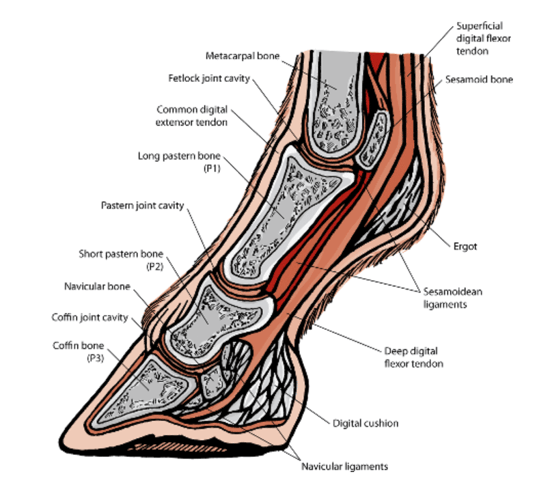
But what puts the ring in “ringbone” in horses?
The answer is that the bone begins to form in response to inflammation (also called exostosis) where the ligaments attach to the joint. ventually, the growth begins to resemble a ring around the entire area.
Since ringbone is a degenerative disease, which means the longer you leave it, the harder it is to treat. It doesn't discriminate between young and old horses, or sport and leisure horses either.
Types of Ringbone in Horses 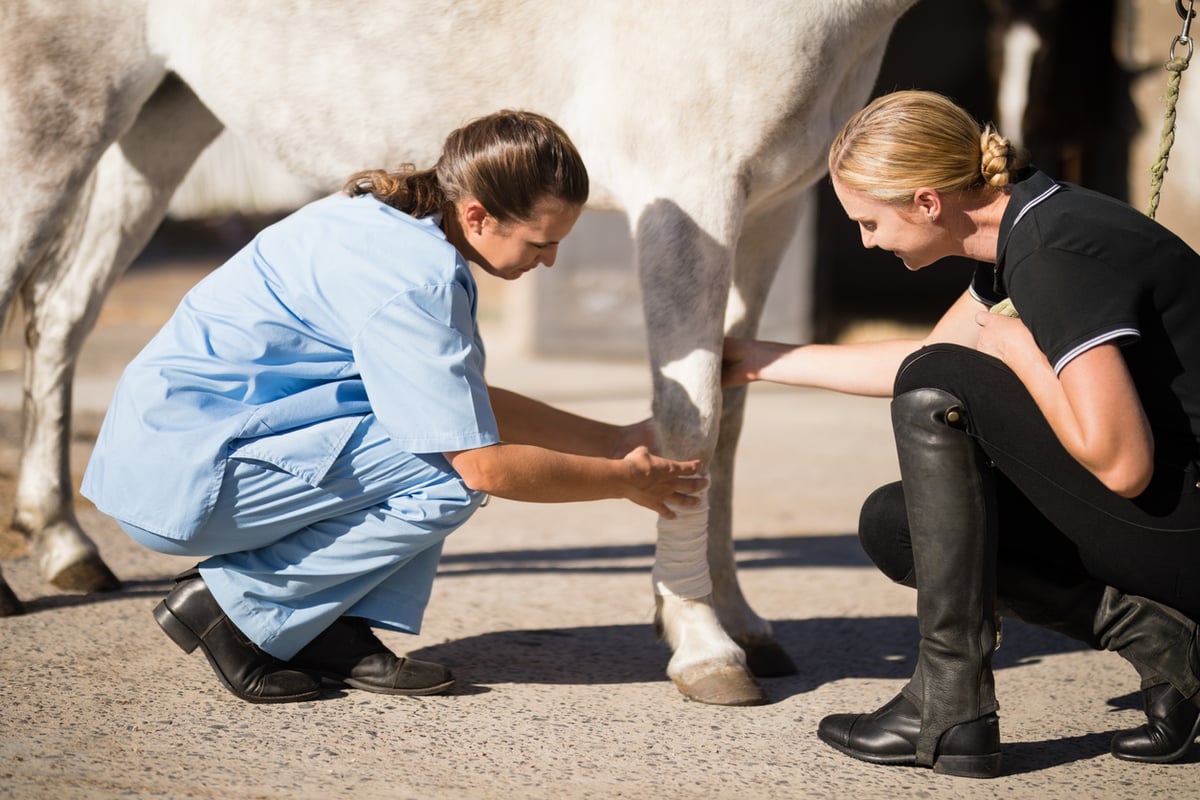
Ringbone in horses can be classified into two locations, depending on where the horse is affected:
- Low ringbone in horses, affecting the coffin joint.
- High ringbone in horses, affecting the pastern joint (can be called pastern ringbone in horses).
But there are two more types of ringbone in horses we should talk about as well:
- “False” ringbone, or periarticular ringbone in horses.
- Severe ringbone in horses.
So let’s get into how each of those kinds of this condition affects your horse, and what the difference is between them all.
Low Ringbone in Horses
Low ringbone in horses is seen as osteoarthritis of the coffin joint, just below the pastern joint in the horse’s lower limbs. It’s commonly seen in the front hooves, and just like high ringbone, can affect all breeds of horses.
Unlike high ringbone, low ringbone in horses is actually less common, and in fact more serious than high ringbone because it’s a high-motion joint. This means it can be more impactful on your horse’s quality of life.
Low ringbone in horses also causes bony exostosis to form, just at the coffin joint this time. It specifically forms under the coronary band, making for painful movement and even a lame horse.
The diagram below shows exactly where both low ringbone and high ringbone form, and how they differ in location.
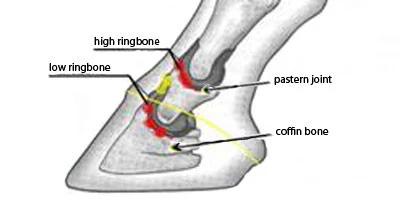
High Ringbone in Horses
As we talked about earlier, the high ringbone in horses is osteoarthritis of the pastern joint. This kind of ringbone most commonly occurs for stockier, heavier breeds, such as Clydesdales, but it can affect almost any horse.
So what’s the difference between high ringbone in horses and other ringbone afflictions?
Well, in the case of the pastern joint, osteoarthritis causes bone to form when there’s trauma to the joint as the body’s protective response — and the pastern joint is not very tolerant to trauma.
So when a sprain of this joint occurs and ligaments or the joint capsule is injured in the process, joint inflammation begins and so does the cycle of injury, inflammation, and laying down bone in the body’s attempt to stabilize the joint. Eventually, the bone that forms ends up resembling a ring around the front and sides of the joint.
Sounds pretty painful, right?
Add in the fact that the joint typically has only a 7-degree range of motion, then throw in the ringbone, and even that little bit of movement will be super painful for your equine friend.
False Ringbone in Horses
Now you might be asking yourself — how did something called false ringbone in horses get on this list?
Well, it’s actually a type of ringbone, too. It just occurs at a distance from the joint, garnering it the name “false” ringbone since it doesn’t happen at the joint like high or low ringbone. If we want to get official, this kind of ringbone is known as peri-articular ringbone.
How horses develop ringbone, makes false ringbone in horses different from high and low ringbone.
False ringbone in horses affects the soft structures near the joint like the joint capsules and ligaments in your horse’s lower limbs, resulting in inflammation all around those spots. It can be especially exacerbated by strain or stress from work, play, and exercise.
False ringbone is more common than the other two kinds of ringbone in horses and also more serious. Bone spurs will eventually form in this kind of ringbone and the joint will become worn, which translates to plenty of pain for your horse.
Severe Ringbone in Horses
Last up, we have what happens when you leave any of the above types of ringbone untreated — severe ringbone in horses.
Severe ringbone in horses is not a type of condition, more so it’s a result of lack of treatment and can greatly affect the quality of life of your horse.
In cases of severe ringbone in horses, the early signs of ringbone have been missed and the bony ring can be felt externally. Horses also show signs of lameness when they bear weight on sore limbs.
Specifically, in severe cases of low ringbone, the coronary band will also bulge at the front of the hoof. This is known as buttress foot.
What Causes Ringbone in Horses?
This condition sounds pretty painful, and like any good horse owner, you want to ensure your equine pal has the best quality of life possible.
Generally, ringbone in horses can be caused by a variety of factors, but there is no one thing that will 100% determine if your horse will get ringbone.
There are various factors that will determine the likelihood of ringbone in horses, including:
- Genetics
- Conformation of the horse
- Whether they’ve received adequate nutrition in their young life
- Too high of a workload
- How often they work or walk on hard surfaces
- How often do they jump
- Previous injuries
All of these factors contribute to the horse’s likelihood of getting osteoarthritis, and therefore ringbone, but none more so than the history of injuries to the joint.
The more your horse has strained, sprained, or torn horse muscles and ligaments in its body, the greater chance that inflammation will have caused exostosis to begin forming.
Ringbone in Horses Symptoms, Signs, and Diagnosis
We’ve talked about the importance of catching ringbone early so you don’t risk severe ringbone in horses, but what should you be looking for?
Put on your detective hats because we will break down signs of ringbone in horses you need to look for.
Symptoms of ringbone in horses you can look for include:
- Lameness, on and off
- Mild changes in gait, including short and choppy movement
- Inflammation around the pastern and, or, coronary band
- The affected area may be hot to the touch (in acute cases)
- Resistant to feet being picked out or to raise legs, as well as a general lack of desire to move or exercise
- Sudden changes in their willingness to jump or participate in sport horse activities
- Trouble or lameness when going downhill
- The area appears rigid and thickened (in severe ringbone in horses)
These are all not only signs of ringbone in horses, but signs it’s time to call the vet.
When your vet checks out your horse for ringbone, a few things will happen.
A diagnosis can only be obtained from diagnostic imaging, but they will also do external checks too, as sometimes more progressive cases can be visually seen around the coronary band or pastern. Radiographs and MRIs are common imaging technologies used in ringbone diagnosis since clinical symptoms are kind of vague.
Ringbone in Horses Prevention Tips
Unfortunately, it’s impossible to completely prevent ringbone in horses, but you can take steps to minimize the risk of it developing, such as managing mild symptoms.
These include ensuring the horse has proper shoes, incorporating preventative supplements into the horse’s diet, maintaining a healthy weight, and watching for signs of repetitive strain.
Corrective Shoeing for Ringbone
No one thing on this list is more important than another, but proper shoeing for ringbone in horses prevention is definitely very key.
There’s no shoe-fits-all approach to this, but the bottom line is that your vet and farrier must work together to create a plan that works for your horse. Ideally, keeping the toe trimmed and the food balanced and managing the break-over point so the horse can lift their hoof off the ground faster.
Something else to consider in proper shoeing for ringbone in horses prevention is that there are specialty shoes that can help support their hoof.
Shoes that can help with corrective shoeing for ringbone include:
- Square
- Rolled
- Rocker-toe shoe
- Half-round shoe
The focus should be on maintaining as close to normal conformation as possible so that your horse’s foot can function properly and be as pain-free as possible.
Incorporate Supplements for Ringbone in Horses
Since osteoarthritis is characterized by cartilage degeneration and loss, you can help tackle this with natural treatment for ringbone in horses before it strikes — with joint supplements.
Horse supplements work to do the following:
- Repair cartilage.
- Prevent further breakdown.
- Reduce pain and inflammation.
- Improve the lubrication of the joint.
TRI-ACTA H.A. for equine is one excellent joint supplement to start incorporating into your horse’s diet. This supplement contains glucosamine and chondroitin, which helps lubricate your horse’s joints, aids in cartilage repair and strengthening, and supports the development of healthy cartilage, muscle, and ligaments. Therapeutic levels of MSM are also included, which helps relieve pain in your horse’s joints. The final ingredient, hyaluronic acid, helps ensure that your horse’s joints are well-lubricated, which helps reduce pain and mitigates joint degradation.
TRI-ACTA H.A. for Equine
Our maximum strength formula is perfect for horses that are ageing, experiencing arthritis and stiffness, are in training and competition, or under a heavy workload.
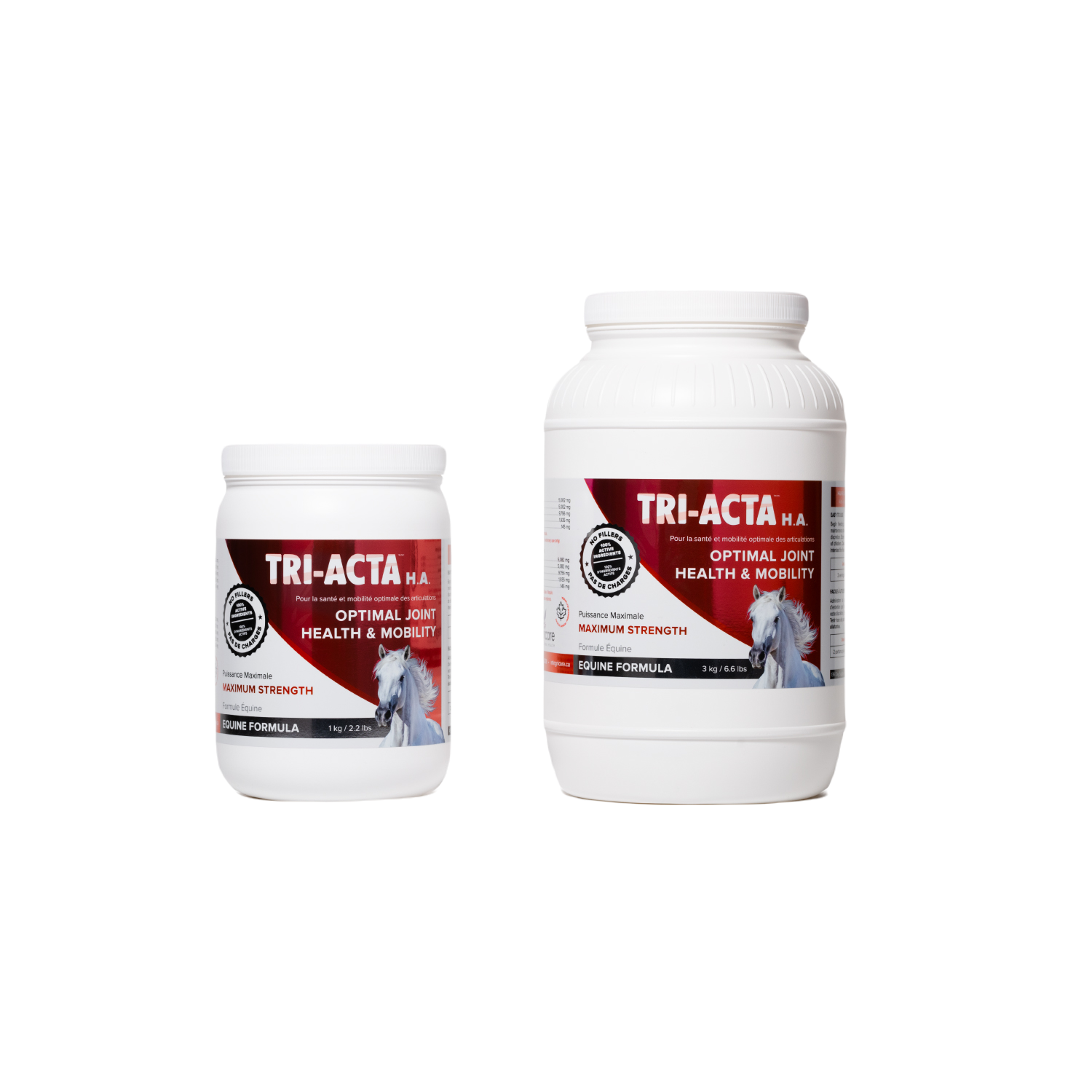
These are all things that can support joint health and help make sure your horse’s joints are in good shape if they do face an injury.
Maintain a Healthy Weight
Like in so many horse health-related problems, maintaining a healthy weight is important.
As you know, what goes up must come down — and if that “down” force also has more weight behind it, damage to your horse’s joints will be worse.
What’s the solution?
You need to exercise your horse to make it easier to combat ringbone.
Consistent, low-impact movement will stimulate circulation and reduce any inflammation your horse may have in the early phases of ringbone development. Making sure their diet is balanced is another consideration, as well as knowing when your horse needs a rest.
Not overworking your horse is really important in general, but is especially important for preventing ringbone in horses. Aavoiding roads and hard surfaces is definitely something to keep in mind, as these surfaces are tougher on your horse’s hooves and can cause pain.
Watch for Repetitive Strain
If you have a working or sport horse, they can be at greater risk for ringbone because of therepetitive strain on their joints.
Repetitive work on unforgiving surfaces which are hard, uneven, or overly deep can heighten the risk of injury. Just think of how your ankles might feel when you jump down from a height onto a concrete surface, or how your bones feel when you run a long distance on the pavement.
If you have a sport horse, you will have to take stock of the activities they do that force repetitive strain on lower joints.
Activities that can cause additional strain on your horse’s joints include:
- Sharp turns, such as in barrel horse racing.
- Sudden hard stops.
- Landing on unforgiving surfaces after a jump.
- Walking or trotting on pavement, such as horses who pull carriages or have police mounts.
The thing to remember is to be mindful of what and where your horse is walking, landing, or how they are moving.
Ringbone Treatment in Horses
When it comes to ringbone, prevention is really important, but ultimately it is the treatment that will help your horse find a better quality of life once they are diagnosed.
Let’s get into how ringbone in horses treatment could look for your equine pal.
Best Supplement for Ringbone in Horses
Because ringbone is a type of osteoarthritis that affects the coffin and pastern joints, you can treat it like you would other kinds of arthritis with joint supplements.
Using horse supplements can be seen as a natural treatment for ringbone in horses and can be used complementary to other treatments like injectables and NSAIDs. Many owners like that supplements don't require invasive procedures or have scary side effects.
With TRI-ACTA H.A., you get a host of beneficial ingredients that help fight the deterioration of cartilage. When there is more cartilage in the joints, there is more cushion from impacts, which equals more comfort for your horse when fighting ringbone. The inclusion of hyaluronic acid helps provide additional lubrication for your horse’s joints, meaning they can move around more and with less pain.
TRI-ACTA H.A. for Equine
Our maximum strength formula is perfect for horses that are ageing, experiencing arthritis and stiffness, are in training and competition, or under a heavy workload.

So what are these beneficial ingredients?
When you’re learning how to read a supplement label, you also need to know what ingredients are most beneficial to your horse.
Here is a breakdown of what ingredients to look for when you’re shopping for a joint supplement for horses.
| Ingredient |
Benefit |
| Glucosamine |
Repairs cartilage by leading to the production of proteoglycans, which in turn leads to the production of cartilage |
| Chondroitin |
Prevents cartilage from breaking down or deteriorating by inhibiting the destructive enzymes that wear away cartilage |
| MSM |
Reduces inflammation and pain by inhibiting a protein complex that helps respond to inflammation |
| Hyaluronic Acid |
Increases lubrication and mobility of the joints by improving the supply and viscosity of the synovial fluid |
Natural Treatment for Ringbone in Horses
Whenever possible, many equine owners seek natural alternatives for their horse’s ailments. Medications like NSAIDs, intra-articular steroids and horse joint injections provide immediate relief but aren’t the best option for long-term use due to the potential for negative side effects like liver and kidney damage.
NSAIDs can also negatively affect the gastrointestinal system, including ulcers and leaky gut. Long-term use of steroid injections and others can result in cartilage breakdown, making the joints worse off than before. It’s important to be especially careful with these options for treating ringbone when dealing with old horses.
Fortunately, there are many safe options for natural treatments for ringbone in horses that have fewer risks and associated side effects.
Natural treatments for ringbone in horses include:
- Herbs
- Supplements
- Alternative therapies
Herbs
Turmeric is nature’s anti-inflammatory herb of choice for humans, and it works wonders for our equine pals too! It is a wonderful anti-inflammatory and antioxidant for treating ringbone in horses.
Six ways turmeric helps symptoms of ringbone include:
- Anti-inflammatory properties
- Anti-oxidant properties
- Anti-arthritic nutraceutical properties
- Natural painkiller
- Bone protective properties
- Anti-microbial properties
A homeopathic remedy for ringbone in horses in a combination of calc fluor, symphytum, and hecia lava; while these may be harder to source than turmeric, the three herbs together are believed to work synergistically to settle the inflammatory process present in ringbone cases.
Supplements
Horse nutrition supplements are considered a natural treatment for ringbone in horses. Supplements like glucosamine for horses and chondroitin are among the best horse health supplements for degenerative joint conditions. Omega-3s, MSM, and hyaluronic acid for horses have powerful anti-inflammatory properties and are commonly found in holistic ringbone in horses treatments.
Alternative Therapies
For a natural ringbone in horses cures, alternative therapies can be very effective. Since ringbone is an arthritic, degenerative disease of the pastern and coffin joints, certain alternative therapies can reduce the swelling and pain associated with osteoarthritis in horses.
Alternative therapies for ringbone horses include:
- Cold therapy
- Acupuncture
- Massage
- Physiotherapy
- Chiropractic treatment
All of these alternative therapies are widely used in the world of natural equine medicine.
Nonsteroidal Anti-Inflammatory Drugs (NSAIDs)
A common tool in many kinds of conditions where the pain is present from inflammation, nonsteroidal anti-inflammatory drugs or NSAIDs are commonly prescribed by vets for treating ringbone in horses since pain management is the first concern.
Commonly prescribed NSAIDs for ringbone include:
- Phenylbutazone
- Firocoxib
- Flunixin meglumine
Oral NSAIDs are good for short-term pain management as they help with inflammation and other symptoms while your horse receives other therapies and treatments. However, you want to be careful as these kinds of medications aren’t necessarily meant to be used long-term and can have unpleasant side effects.
Side effects of long-term or improper NSAID use can include:
- Gastric Ulceration
- Right Dorsal Colitis
- Renal Injury
- Toxicosis
These side effects can be dangerous and painful, which is why it’s important to always consult your vet before administering NSAIDs.
Prescription Joint Injections
Another option for treatment that can help your horse with ringbone symptoms is the variety of prescription joint injections.
Unlike NSAIDs, which are taken orally or in food, certain medications can be injected right into the affected joint for increased potency and effectiveness. This allows the horse to feel pain relief and regain mobility.
A few common types of medications are administered this way:
- Corticosteroids
- Hyaluronic acid
- Polysulfated glycosaminoglycans (PSAGs)
- Polyacrylamide hydrogel
Each of these has different functions, but primarily they are designed to reduce inflammation and improve lubrication in the joints.
Beware, though — they do have their drawbacks. Risks include degeneration of cartilage in the affected joint and an increased risk of laminitis in horses. Always talk to your vet if you feel something is wrong with your horse, especially after trying a new treatment for ringbone in horses.
FAQs About Ringbone in Horses
Is Ringbone In Horses Genetic?
In some cases, the ringbone can be genetic. Articular ringbone, also known as articulating ringbone, is usually due to genetic conformational predisposition, which really means if your horse is genetically predisposed to have things like high heels and short toes or other problems in their conformation, then they would also be predisposed for ringbone in horses. “False” ringbone in horses is not usually genetic.
Can Ringbone In Horses Be Cured?
Ringbone in horses has no cure. It is a degenerative disorder. Once ringbone in horses occurs, it does not leave them and will slowly (or quickly, depending on the treatment or lack thereof) affect your horse more as time progresses.
How To Help A Horse With A Ringbone?
The best thing to help affected ringbone horses is to treat early, manage pain, and work with the farrier and equine vet to create a custom treatment plan for your horse that will make them as comfortable as can be and even improve their condition with the right medications or surgery.
How Long Can a Horse Live With Ringbone?
Ringbone prognosis does not typically affect a horse’s lifespan, and most horses can live long lives and return to normal activity once the site has healed. As the bones in the joint grow together to form a single unit, it reduces friction, causing less pain and inflammation.
How Common Is Ringbone in Horses?
Ringbone is a fairly common diagnosis. Although it is more common in old horses and horses with athletic careers, ringbone in young horses is also possible. Ringbone can affect any horse regardless of age, breed, performance, or career.
Can You Ride a Horse With Ringbone?
A horse with an active case of ringbone should not be ridden. While a horse is recovering from ringbone, keeping a low-level exercise plan is advised to allow the bones in the joints to fuse. Fusion in the joints can take six months up to a year with careful management. Many horses with ringbone can resume normal activities, including riding, once fusion occurs.
How to Start Preventing Joint Pain Now

While nothing can really prevent or cure your horse of ringbone 100%, you can help make sure their joint health is in tip-top shape to help them fight the symptoms of ringbone more easily.
One thing that is both good for prevention and curative care?
Joint health supplements for horses.
When you give your horse products like TRI-ACTA and TRI-ACTA H.A., you’re setting them up for success with the healthiest joints possible to make sure ringbone in horses like yours doesn’t take your horse out of commission for good.
TRI-ACTA H.A. for Equine
Our maximum strength formula is perfect for horses that are ageing, experiencing arthritis and stiffness, are in training and competition, or under a heavy workload.

Newsletter Signup
Subscribe to our newsletter to receive the latest news and exclusive offers.
.jpg?height=2000&name=Cliick_Integricare-DISPLAY-REVISEDV2%20(1).jpg)
Proactive & Therapeutic Joint Supplements
When given daily, Integricare joint supplements recover bone and joint injuries faster and help prevent mobility injuries from happening in the first place.

